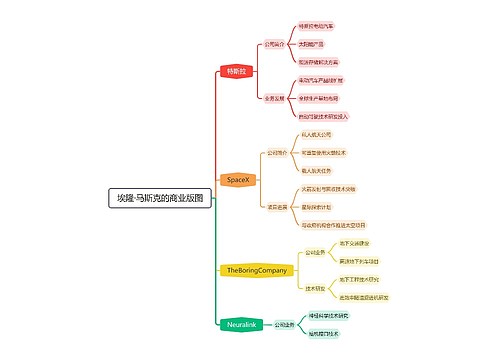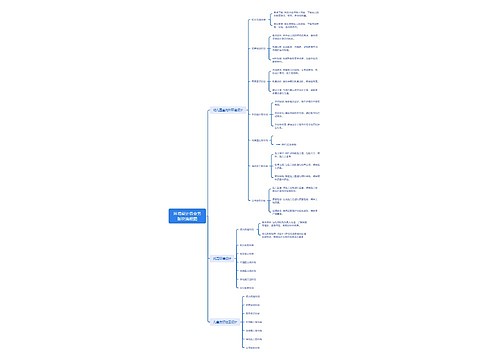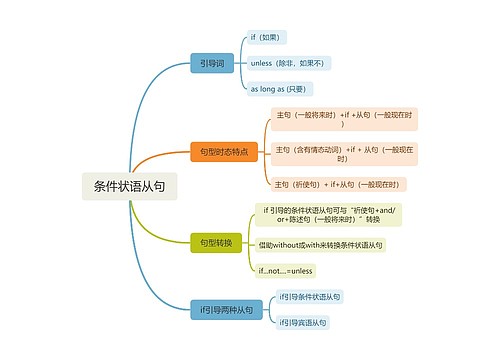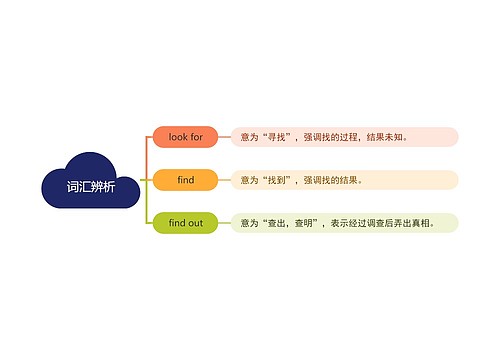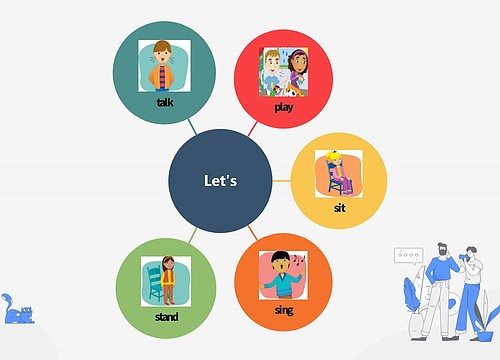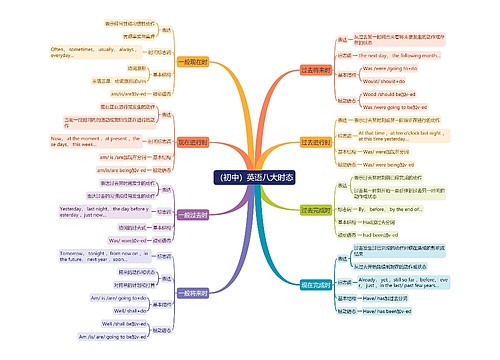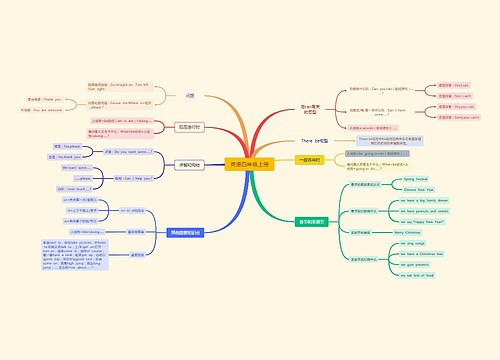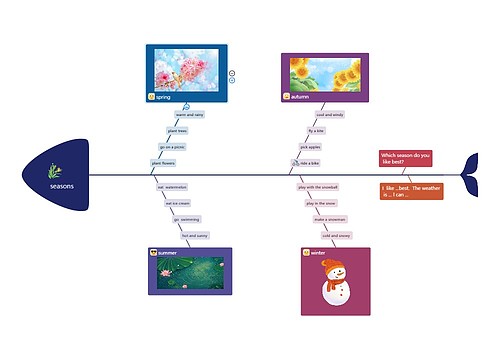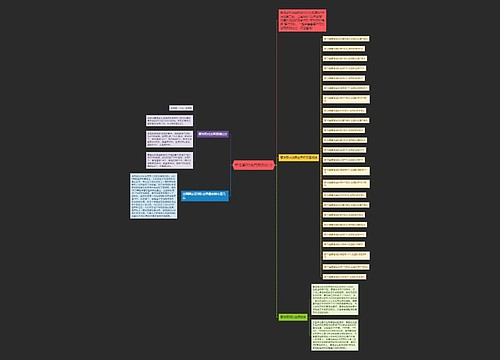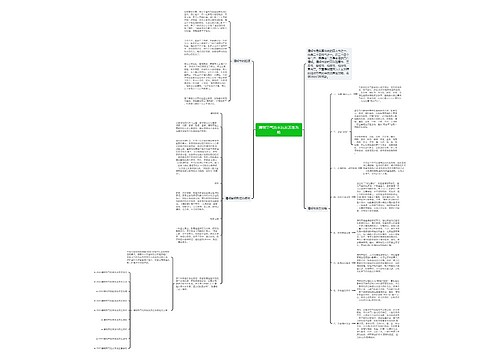
九年级上册仁爱版英语教案思维导图
落花凄凉
2023-04-04

九年级上册仁爱版英语教案
英语
九年级
上册
教案
教案是教师为顺利而有效地开展教学活动的保障,作为一名教师你知道如何写一篇教案吗?下面是树图网为你准备的九年级上册仁爱版英语教案,快来借鉴一下并自己写一篇与我们分享吧!九年级上册仁爱版英语教案篇1一、
树图思维导图提供《九年级上册仁爱版英语教案》在线思维导图免费制作,点击“编辑”按钮,可对《九年级上册仁爱版英语教案》进行在线思维导图编辑,本思维导图属于思维导图模板主题,文件编号是:d71ac9df813e85763beb8ad2ff2eb771
思维导图大纲
相关思维导图模版
九年级上册仁爱版英语教案思维导图模板大纲
九年级上册仁爱版英语教案汇总5篇
教案是教师为顺利而有效地开展教学活动的保障,作为一名教师你知道如何写一篇教案吗?下面是树图网为你准备的九年级上册仁爱版英语教案,快来借鉴一下并自己写一篇与我们分享吧!
九年级上册仁爱版英语教案篇1
一、教材分析
本单元要求学会谈论重要发明的历史及用途,然后针对各项发明的用处及特点,发表自己的看法,并说明理由。话题一直是围绕着历史上和日常生活中的重要发明,通过使用"Passive Voice"(被动语态)形式的句型,循序渐进地展开讨论。课本设计的活动情景能够自然地引发学生的好奇心,大家积极地投入到话题讨论中,寓教于乐,容易引起学生的兴趣;同时,它也有利于开阔学生的思路,培养创造精神,激励他们展开丰富的想象翅膀,人人都能成为"小发明家"。
二、教学目标
语言目标
重点词汇:salty, sweet, sour, crispy, pleasant, potato chips, slipper, leaf, fire, scoop, light bulb, microwave oven, abacus, camera, beverage, be invented by, be used for, by mistake, by accident
重点句型:When was the telephone invented? I think it was invented in 1876.
技能目标
能够谈论发明的历史和用途
能够对生活中的发明发表自己的看法
能够解决生活问题,设计新发明
情感目标
充满想象力,善于观察事物
面对难题,用积极的态度解决,发挥创造能力
认识世界,改造世界
三、重点难点
重点
讨论重要发明的时间、发明者和用途,学习使用句型"When was the telephone invented?","Who was it/were they invented by?","What is it/are they used for?"和答语。
难点
如何描述一项新发明的来历和用途
四、课前准备老师准备
"大百宝箱"(由中等大小的盒子、彩纸等DIY而成),flashcards;
a package of potato chips, some bars of chocolate.
学生准备
上课前引导学生使用互联网等工具查询1a图片中5项以及自己感兴趣的发明物的来历,然后在准备好的.卡片反面写上关于这项发明的日期、发明者和用途等信息(如果学生查到的信息是用中文描述的,要求简单地翻译成为英文信息),正面写上发明物的名称,存放在自己制作的"小百宝箱"里。这个过程帮助学生们在进入新课程之前熟悉新单词,为操练目标语言做准备。它有助于学生养成自主学习、解决问题的能力,不但能够了解课本知识,而且发现了许多课外知识、增长了见识。
九年级上册仁爱版英语教案篇2
一、教学设计思路、指导依据说明:
本话题是仁爱英语八年级上册第二单元的第二个话题,主要学习个人卫生和饮食健康等内容,也是中考中一个重要的.话题。本话题主要通过谈论如何养成良好习惯,保持健康,学习掌握重要句型和词汇;并通过阅读有关饮食健康的文章,引入更多的词汇,同时学会运用简单的阅读策略获取信息和学会保持良好的习惯。最后以Project探究形式对所学内容进行运用,培养学生的综合语言运用能力。即是能将所学的语言组织起来,写成语句连贯、表意准确的短文。
二、教学目标分析:
1.学会描述良好的生活习惯。
2.根据所学的词或词组, 写出关于如何保持健康的重要性并给出好的建议的文章。
三、重点和难点分析:
描述出保持健康的方法,以及自己的看法。
四、教学过程设计:
Step 1. Lead in: 通过讨论下面的问题,引出本节课的大任务。吸引学生,激发其学习兴趣,提高学生作为学习主体课堂参与意识。
列一个目录在黑板
1. How often do you exercise ?
2. How often do you eat vegetables?
3. How often do you eat fruit ?
4. How many hours do you sleep every night ?
5. How often do you drink milk ?
6. How often do you eat junk food ?
7. How often do you drink coffee ?
Step 2.Revision 让学生先以小组的形式复习section A 和section B的内容,使用大脑风暴法(让学生brainstorm)说出一些食物名称和healthy 有关的单词短语和句子,目的是激活学生头脑中和写作话题keep healthy 相关的东西来酝酿写作的思路,以便写作时能选择有意义的东西。
同时通过PPT出示一些good habits or bad habits及一些建议的短语:
Taking a walk after meals. Taking a walk after meals. Drinking enough water every day. Washing hands before meals Eating too much meat. Going to bed late and getting up late.
Throwing litter around.
Going to school without breakfast Problems: unhealthy Advice
1. should eat a lot of vegetables
2. should eat a lot of fruits
3. can drink milk every day
4. don’t drink coffee
5. shouldn’t eat junk food
6.exercise every day
7.should have eight hours’ sleep
8.don’t play computer games or watch TV too much
Step3. 展示作文题目,指导学生如何谋篇布局,规划文章结构,起草文章,组织语言。
请根据课文所给的关于饮食和运动的信息提示, 以 " How to keep healthy" 为题写一篇70个词左右的短文。
Step4指导学生写作。
1. 通过链接让学生了解如何写好作文,并分析文章的结构:采用"总—分—总|的结构
来写。本篇习作重在how to, 通过阐述好的生活习惯对健康的重要性来提倡健康的生活方式。
2. 让学生了解中考作文评分标准。
Step5. 出示一篇例文,让学生了解文章结构,并动手起草写作文。
Step6. Share the writing.
1.小组成员互评互改:教师简要传授修改策略,同桌互相阅读作品,并做必要的修改,并用红笔划出好词、好句。草稿必须签上批改同学的名字后上交。
2.在班上朗读一篇优秀的作文和中等的作品并一一进行点评。
点评两篇学生习作,选自一位基础较好的同学和一位基础一般的同学的作文。教师根据上述提供的写作标准,详细点评两篇习作的篇章结构和句法的功能。目的是使学生尽力领会教师对文章的点评,培养学生选词和用词的能力,指导学生多模仿好文章的优点。
Step7. Homework.把修改好的作文公整地抄作文本上。
五、教学反思:
本课的设计使学生从学习中学会了如何谈论保持身体健康,提高了学生学习兴趣,增加了学生的知识面,提供了一定的语言实践,锻炼了学生运用语言的能力。不足的是孩子们对写句子还是存在很大的问题,一些学生还是中式思维句式,逻辑思维也较混乱。在以后的英语写作中,讨论部分应该加进去多些句子,这样能更好的拓展学生的思路。还要教给学生如何去修改自己的作文。另外在今后的教学中还要增加其他不同类型的写作训练,以提高学生的写作能力。
九年级上册仁爱版英语教案篇3
Teaching Objectives:
Students should understand the meaning of reading, master useful expressions and learn more about the present perfect tense.
Language Focus:
Useful topic: Surfing, beaches; useful expressions: have been, never, ever, no matter how, neither nor, etc; and other reading skills.
Properties:
Tape recorder, topic cards, answer sheet, etc.
Teaching Procedures:
I. Revision
Revise the Present Perfect tense, do the exercise 2 on page 97, ask students answer the questions one by one.
II. Pre-reading
There are many kinds of water sports, such as swimming, paddling, Boogie-boarding, and dragon boat race in China. What water sports have you watch? What kind of water sport you like best, why?
III. While-reading
Before first listening of Surfing, read the questions of exercises 1 on page 98. Prepare their answer sheet. Ask the students bring these questions to listen the tape or video first time. Write their answer if possible.
Then play the tape or video once again, ask the students check their answers. And then let them try to give the main sentence of this reading.
Open the textbook, turn to page 7. Let Ss find the new words and useful expressions in five parts (each part for each paragraph). Ask them give correct explanation. Make sure everyone is on task. While working, teacher go around the classroom and give help where need. Then show the answers of them. Teacher explains the main sentences, such as Now it is enjoyed by people all over the world; Its neither too hot nor too cold all the year round; etc.
IV. After-reading
Discussing in four parts, talk about San Francisco, Honolulu, Hawaii, Hainan island. After discussion Ss should give Where is it, What it famous for, What water sport are there, etc.
V. Homework
1. Finish exercises 2 on page 98.
2. Revise the new words, useful expression and sentences
九年级上册仁爱版英语教案篇4
一、教材分析:
Let’s talk部分通过Mike和John第一次见面的情景对话,让学生学习如何用What’s your name?询问对方的姓名并作出回答以及表达道别的方法:Goodbye! Bye,…. Let’s play部分从实际生活入手,通过在卡片上写人名来进一步巩固Let’s talk中的会话。Let’s check部分中的Listen and number这道题通过听力练习检测学生对本单元所学对话内容的掌握情况。
二、教学目标:
1、能力目标
(1)能够在真实情景中询问对方的姓名并作出回答以及表达道别的说法。
(2)能完成Let’s check部分的听力检测。
2、知识目标
听懂、会说Whats your name? My name’s …. Goodbye!Bye.
3.情感、策略、文化目标
培养学生运用所学知识与他人交流的习惯,渗透尊重他人的情感。
三、教学重、难点:
1、重点:询问对方的姓名What’s your name?及回答My name’s….以及道别的表达法:Goodbye! Bye,…
2、难点:(1)能在实际情景中灵活运用What’s your name? My name’s….
(2)name’s的发音。
四、教学过程:
教学设计参考个性化备课
Step 1 Preparation
1、 Sing a song"Hello".课本P10歌曲。师播放录音,师生拍手、挥手齐唱。
2、师生相互问侯。用自己的真实姓名做自我介绍, Hello, Im … My name’s...(注意放慢语速,可重复)
Step 2 Presentation
1、教学My name’s….
(1)课件展示情境图并通过:What are their names ?引出本节课的人物。T:Mike is talking with John .Listen and answer :What does John say ?引出第一个知识点:My name’s...
(2)师带着自己的姓名卡片,走到学生中间和其中一名学生打招呼:T: Hello, Im Mr….My names….重复两遍并同时指着自己的姓名卡片,再指着学生的姓名卡片问Whats your name?
(3)教师引导学生回答My names….用类似的方法与其他学生进行问答练习。
板书句子My name’s….师教读、示范发音(强调name’s的发音)、领读,生跟读,个读。
(4)指生做自我介绍Hello!/Hi! My name’s….小组内练习。
(5)引导学生归纳总结,介绍自己的姓名有两种表达法:Im..../My names....
2、教学What’s your name?
(1)Listen and choose:What does Mike say ?
A.What’s your name ? B.My name’s Mike.通过听音选择引出第二个知识点:What’s your name ?
(2)教师带着自己的姓名卡片说My names….问2---3名学生What’s your name?
(3)师板书句子What’s your name?师教读、示范发音(多次示范what’s的发音)、领读,生跟读,个读。
(4)让一生站起,其余生齐问:What’s your name?此生回答:My name’s …
(5)Pair work小组内问答What’s your name? My name’s….
3.教学Goodbye! Bye,...
(1)Listen,watch and answer.播放视频并出示问题:What does Miss White say ?引出Goodbye并教学。师请一位同学到讲台前与自己对话。例如:
Hello, Im….Whats your name?/ My names …./ (分别时说) Goodbye!/ Goodbye或Bye!
教师板书Goodbye! Bye.师教读、示范发音、领读,生跟读,个读。
(2)师生示范,小组内进行问答练习。
(3)引导学生归纳总结道别的几种表达法:Goodbye.Bye.Bye-bye.告诉学生Goodbye.是道别的正式用语,Bye! Bye-bye.是非正式用语。
Step 3 Practice巩固练习
1、 T: Listen and point.生看课本,听录音,注意正确的语音、语调。
T: Listen and repeat.生跟读录音,模仿正确的语言、语调。
2、师生、生生、同桌戴头饰分角色朗读课文。
3.Lets play.四人或六人为一个小组,先将学生自制的名卡收集在一起,再由每组的"小老师"通过问Whats your name?同学回答My names….的方式练习,答对的同学拿回自己的名卡戴在胸前。教师与一组学生进行示范,分小组练习。
Step 4 Production输出运用
1、角色表演:让学生戴上头饰,表演展示Lets talk的对话。
2、Let’s act.让学生用自己的英文名,师先与一生示范,然后小组内进行交流。如:
Hello!/ Hi! What’s your name?/ My name is…./ Goodbye!/ Bye!
Step 5 Progress检测提高
1、做当堂达标题。
做基础训练第3页第一、二题。
2、Lets check听录音,完成听力练习,核对答案。教师及时表扬。
3、Summary:What have you learned today?引导生总结本课所学的内容。
3.Homework
(1)听录音跟读课文。
(2)用对话中所学的内容与同学和老师交流。
九年级上册仁爱版英语教案篇5
一、教学分析:
Let’s talk部分主要是会话学习。通过Miss White和学生第一次见面打招呼的情景,提供学生要学习的核心句型Hello/Hi, I’m …要求学生能理解对话大意,能正确理解对话大意,能用正确的语音语调朗读对话,能在语境中运用Hello/Hi跟别人打招呼并用I’m …介绍自己。本课时的学习内容在儿童英语有相关的学习单元,学生对打招呼和简单的自我介绍有初步的了解。本课为接下来的询问对方姓名对话学习打下基础。这是正式学习英语的第一节课,对培养学生的学习兴趣,激发英语学习热情尤为重要。Let’s play部分让学生在游戏活动中巩固练习所学问候语及自我介绍用语。Let’s sing部分通过学唱歌曲"Hello!",让学生感知英语学习带来的快乐。
二、教学目标:
1、知识目标:听懂、会说Hello./Hi.Im….
2、能力目标
(1)能够在真实情景中在教师的帮助下理解对话大意,会使用见面打招呼、自我介绍的日常用语。
(2)能够按照正确的语音、语调及意群朗读对话,并能进行角色表演。能够听懂、会唱歌曲"Hello"。
(3)能够在情境中运用Hello!Hi!与别人打招呼;能够在情境中运用举行I’m...自我介绍。
3.情感、文化目标
(1)情感态度:培养学生乐于开口,敢于开口讲英语的习惯,激发学生想学、乐学英语的兴趣和愿望。
(2)文化目标:了解中西方名字的不同形式。
三、教学重、难点:
1、重点:主要是见面打招呼和自我介绍的会话学习,使学生在不同的生活情景中听懂、会说Hello./Hi.Im….
2、难点:自我介绍用语I’m …的发音不容易到位,学习起来较难,教师要适时纠正,切不可挫伤孩子的学习积极性。
四、教学过程:
Step 1 Preparation
1、 Free talk
T: Hello, boys and girls.I’m….I’m your English teacher.(PPT教师作简单自我介绍)Welcome to my English class!
2、 Introduce English
教师用交谈的方式与学生讨论一下英语的作用以及学习英语的意义。让学生知道虽然还没学习英语,但是我们已经会说一部分英语了!引导学生说说我们日常生活中已经会说或比较熟知的词汇,如TV,CD,VCD,DVD,OK!Yeah!Hi!Bye!Cool!Wow!E-mail,cartoon等等来激发学生想学英语的兴趣和愿望。对回答较好的学生进行评价,鼓励。
3、Enjoy the song " Hello ".师播放录音,让学生欣赏歌曲,并提问你在歌曲中听到那些单词,试着说一说。
Step 2 Presentation
1、Look and guess.What are they talking about? (观看文本视频,猜一猜老师和同学们正在讨论什么?A打招呼B数数字)鼓励学生勇于表达,建立学好英语的信心。
2、教学Hello!
T: Hello, boys and girls.教师与学生见面打招呼,呈现hello,引导学生跟老师打招呼用Hello!师与生用Hello!打招呼,板书。师教读、示范发音,注意重音、领读,板书,生跟读,生齐读,开火车读。
3.教学Hi!
以同样的方式呈现练习Hi!
告诉学生Hello!一般可作为熟人、亲朋好友之间的打招呼用语,语气比较随便,还可以用Hi!替换,Hi!语气更随便一些。展示一些场合的图片师生间用Hello!/Hi!打招呼。
师与一生用Hello!/Hi!打招呼,然后师与全体学生打招呼,生生练习打招呼。
4.教学I’m….
(1)展示情境图,教师先介绍自己,Hello, I’m….You can call me Miss/Mr....师板书Miss/Mr,教读,并解释学生对老师的称呼用Miss/Mr…Miss/Mr表示某老师。
(2) T: Hello, I’m….鼓励并引导学生学说Hello, I’m….名字直接用汉语拼音,教师戴上Sarah等人的头饰分别介绍并配以体态语,说:
Hello!/Hi!I’m Sarah/Wu Yifan/John/Mike/Miss White/Liu Xin/Zoom/Zip.板书(中西方姓名分开板书,初步了解东西方文化的差异),让学生看口型强调I’m的发音。师教读、示范发音、领读,生跟读,个读。
(3)学生观察板书,引导学生归纳总结中文名字和英文名字的区别,以及学生对男女教师的英文称呼。
(4)学生戴上Sarah等人的头饰说Hello!/Hi!I’m….学生用真实姓名简单介绍:Hello! /Hi! I’m….
Step 3 Practice
1、T:Listen and point.观看视频,注意正确的语音、语调。
T:Listen and repeat.生跟读,模仿正确的语言、语调。
2、Read in roles.先师生示范,再小组内生生角色朗读课文。
3.Let’s play.将对话中的名字换成自己的真实姓名,进行练习,小组内练习。
4.游戏"击鼓传花"。教师有节奏的敲击小鼓,学生传花。当教师的鼓声停止时,拿到花的同学站起来说:Hello/Hi! I’m….如果学生已有英文名字,在此处进行练习,如果没有,可先用中文名字代替。
Step 4 Production
1、教师为每小组准备若干名字的头饰或卡片。一人佩戴自己喜欢的名字头饰,小组内的其他同学抽卡片进行打招呼练习。先师生示范,再小组交流,最后全班展示交流。
2、自我介绍,互换自制名片
由于师生第一次见面,先师与一生用Hello/Hi! I’m…进行正式自我介绍互换自制名片。再小组交流,最后全班展示交流。
Step 5 Progress
1、Summary:What have you learned today?教师指板书,引导学生总结本课所学内容。如:见面打招呼、自我介绍用语等等。
2、Homework:
(1)听录音,跟读会话。
(2)给自己选择一个英文名字,并制成英文名卡。师可提供部分男孩女孩的英文名字,也可附上名字含义供学生选择。
查看更多
相似思维导图模版
首页
我的文件
我的团队
个人中心

